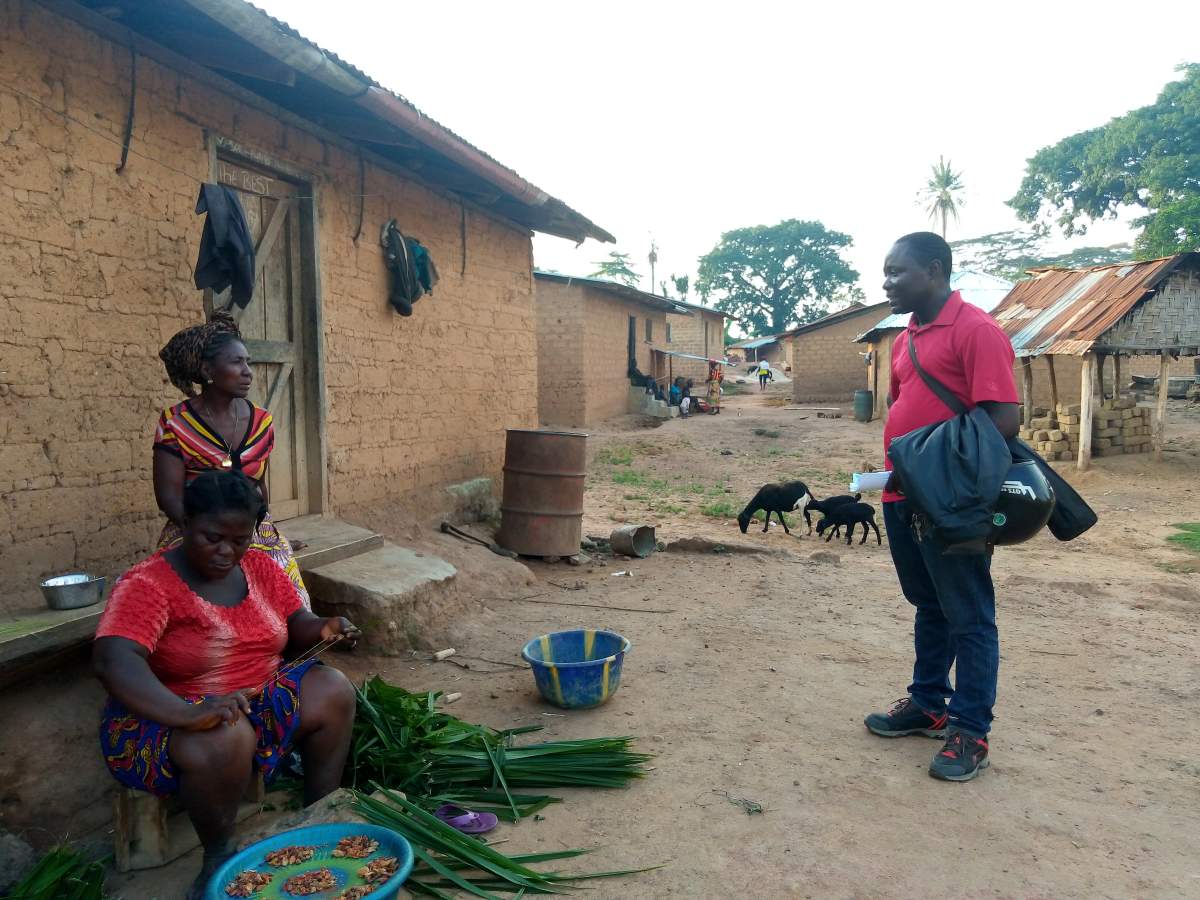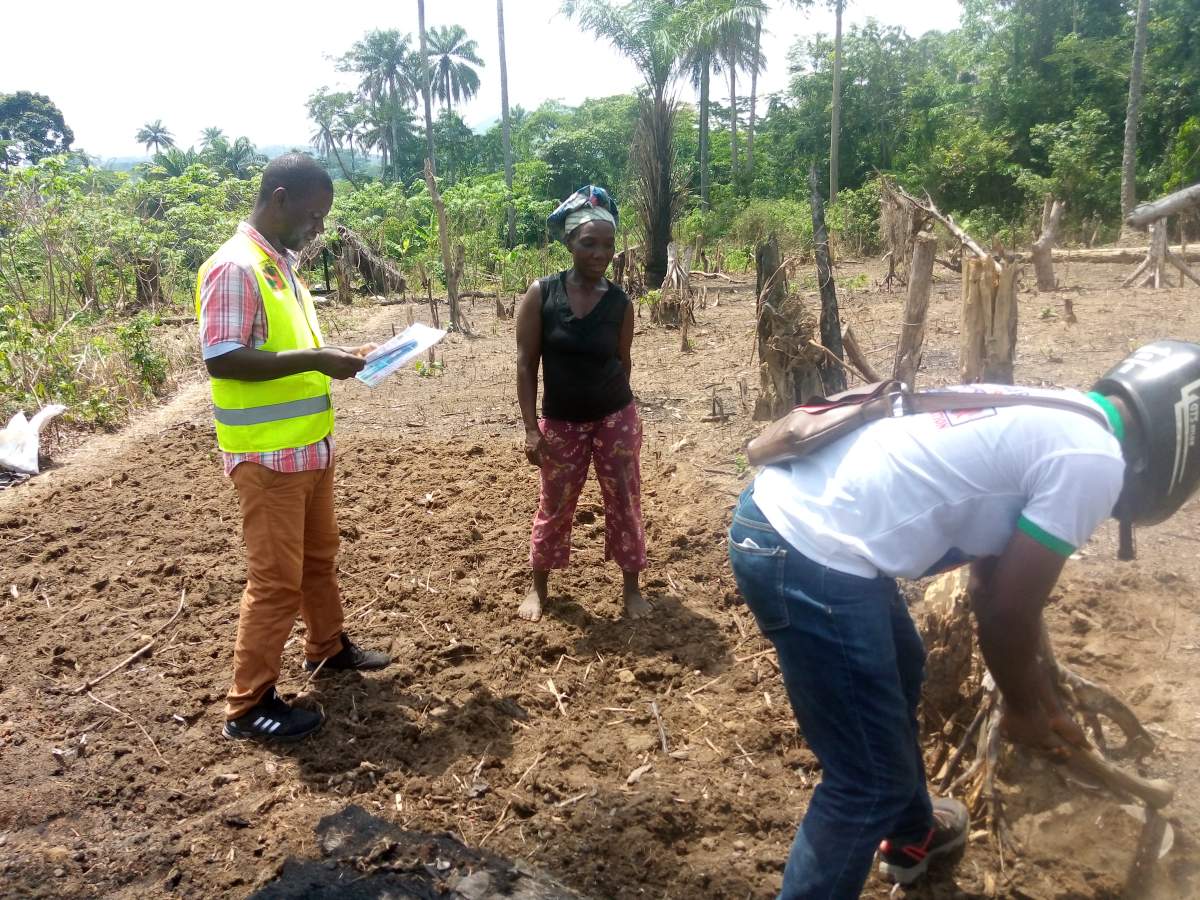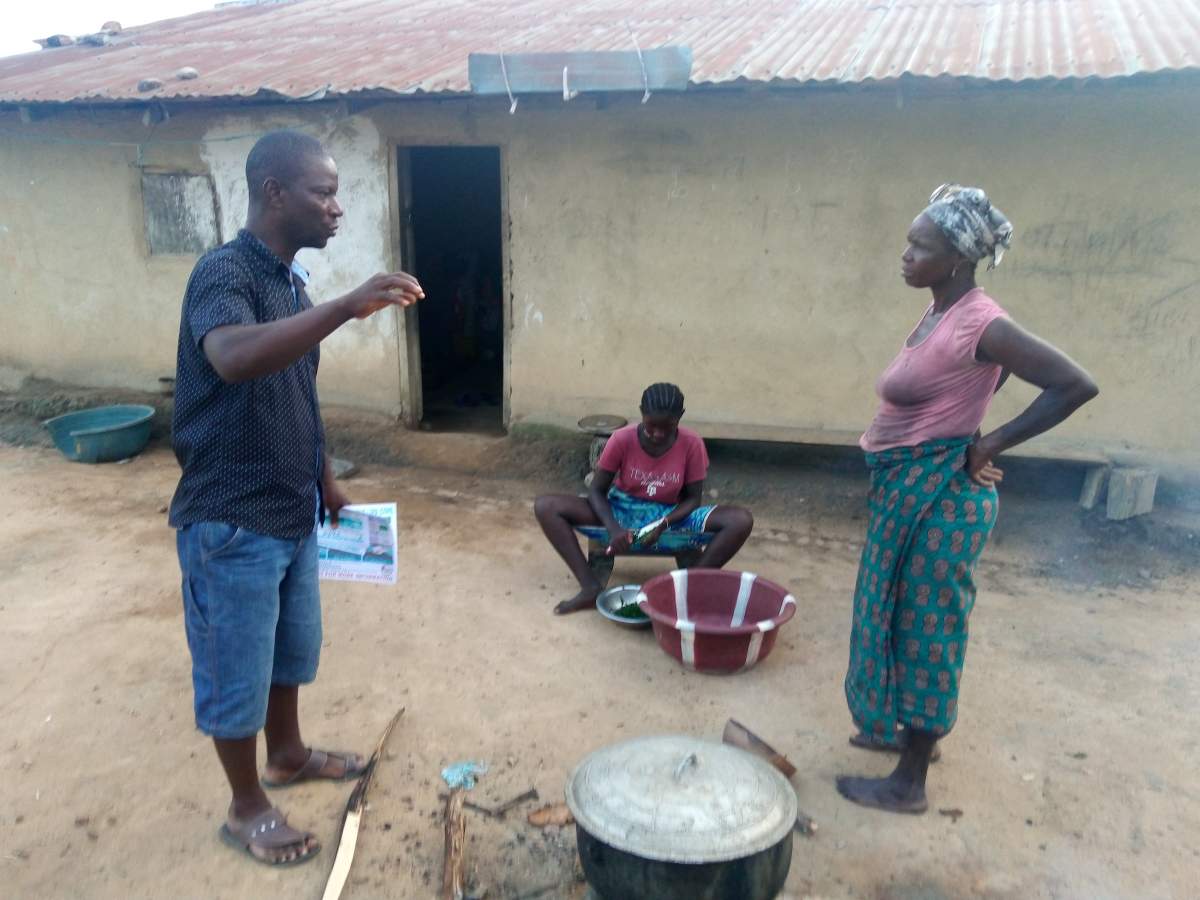Global News is a media partner with Journalists for Human Rights and, as part of that partnership, is proud to provide a platform for updates on JHR programs.

When I first started to cover the Ebola outbreak in 2014, it was like travelling without knowing where and why I was travelling.
It all started in May 2014, when the first Ebola patient died right in the street, not far from where I work.
At that time, many people did not believe there existed anything called Ebola. Many thought it was a plan by western counties in collaboration with their leaders to kill them all.
They did not trust their leaders, whom they accused of being too corrupt, thinking they were only trying to source money from international donors to enrich themselves. At one point, they believed that their water sources had been poisoned with chemicals as a trial for health purposes.
As I was the only journalist at the time in a county with a population of over 400,000, I knew I had to do something to inform the world about what was going on in this part of Liberia. I had to provide information that could save the lives of people who could barely read or write and who depended on farming as a major source of income. The only trusted people were their educated children or relatives, who often explain the news to them. I happened to be one of their educated children or relatives.
READ MORE: (April 20, 2020) New Ebola case in Congo days before officials intended to declare end of outbreak
- U.S. removal of panels on Black WWII soldiers in Netherlands draws backlash
- Thieves drill into German bank vault, steal tens of millions in cash, valuables
- More artists cancel Kennedy Center shows after addition of Trump’s name
- New dashcam video may show missing Texas woman who disappeared on Christmas Eve
Challenges
From my past experience covering the Ebola outbreak, I realized that journalists are as important in these crises as health workers. We do not treat sick people or prescribe drugs for patients. Our role in giving timely, accurate, balanced information can save lives, reduce suffering and enhance the transparency and accountability of aid efforts. Bad information or information that comes too late can lead to the loss of precious lives and increase suffering.
Some of the greatest challenges during the Ebola crisis were to convince the locals to accept that there was a deadly killer called Ebola and to convince them to stop their traditional ways of burial, instead allowing health workers to do the burial.
This seemed impossible at first. Locals chased after anyone telling them about Ebola and even threatened to kill them. The flood of fake news and the mistrust caused by years of civil war further contributed to this difficult task. One tribal group, the Mandigoes, at one point accused another, the Lormas, of poisoning wells in their communities. That was terrible. As a journalist belonging to the Lorma tribe, it took me time and bravery to be able to report from the Mandingo communities that were the epicentre of the outbreak at the time.
But trust was one thing that got me through. As a journalist, you need to be trusted by your audience. You must be truthful to them and must be willing to listen to the other side of the divide.

Get daily National news
With no protective gear and no health training background, I knew I had a difficult task to perform. I had to use a raincoat, rubber boots and socks on my hands because I did not have plastic gloves. I had to change those socks each day upon my return from the field, place them in chloride water and have it dried in the sun the next day. After every 21 days, I celebrated because that was the incubation period of the Ebola virus. I was always insecure about my own safety, thinking that I could get infected like any other person, die and be buried the same way others were being buried.
The government’s own message was that when you get Ebola, you will die. This caused panic and fear among the population.
People were terrified even to visit any hospital or health centre when they got ill or needed medication. Health workers were badly trained. It was heartbreaking for me as a journalist to see the impact. Many people died in the streets trying to reach an ambulance to be taken to the hospital.
I had to do two different jobs: reporting on the outbreak and educating people to accept the fact that Ebola was real but also not necessarily a death sentence for those infected. The biggest challenges in covering the Ebola crisis were trust, misinformation and fake news, especially dealing with communities that strongly believe in their traditional faiths. Central and local government authorities on many occasions asked me to underreport the scale of the fatality rate because they were losing the fight. But I did not accept doing that because I had humanity, professionalism and trust in my mind.
WATCH BELOW: University of Alberta study looks at using Ebola drug to treat COVID-19

Amid all the fear and panic, there were attacks on health workers. Eventually, the central government brought in the national army to protect health workers and journalists. Luckily, I was never a target of vicious attacks myself, as I travelled in hard-hit areas to collect news. I am sure it was because the locals knew me, trusted me and considered me as the conveyer of the true message of Ebola, reassuring them that an affected person stands the chance of recovering when he or she seeks early treatment. I was doing my job as a journalist by providing the right information at the right time, and in so doing, I gave many people the courage to seek early treatment.
Journalists for Human Rights trained me to always report timely, accurate and well-targeted information that can save lives, reduce suffering and can improve the quality and accountability of aid efforts.
According to the superintendent of Lofa County at the time, George Dunor, who lost 12 of his family members in one week to Ebola, journalists are the most trusted sources of information, and particularly so at such a moment. They are a bridge that builds coordination between communities and the government. As such, journalists should be supported and considered trusted front-line fighters in the fight against a deadly pandemic.
We worked in those front lines as trained human rights journalists and we called for help with factual and timely information that saved many lives today. I know it was a challenge, but we did it as trained and trusted professional journalists and we are ready to do it again for COVID-19.
Fighting COVID-19
With that in mind, and the experience that the government may not be able to provide information dissemination and awareness that could save lives, I have organized my colleagues under the name Community Volunteers Initiative of Lofa.
We have mobilized funding from individual journalists and owners of media institutions in Lofa County to print over 10,000 colourful awareness flyers ensuring towns, villages and farms have access to relevant information on the spread of COVID-19.
Although we often used electronic media, such as radio stations, to send out awareness messages about COVID-19, we believe face-to-face awareness can yield more positive results during a pandemic. It is our strong conviction that with such awareness processes, the fight against the novel coronavirus disease will be successful in this part of Liberia.
Since we started our awareness-raising early in March 2020, we have visited over 100 towns and villages, talked to over 5,000 people and distributed preventive materials such as handwashing buckets, soaps and flyers, at the same time telling people about how dangerous the coronavirus is and how terrible it could be if they failed to follow the preventive measures put in place by health authorities.
We are taking a different approach than we did with Ebola. We want to report more on the preventive measures of COVID-19 and get our people ready, rather than waiting to report on the outbreak when it finally lands in our towns and villages in Lofa. Right now, unlike during Ebola time, our people in Lofa are more than hospitable when we visit their towns and villages and are more eager to listen to us.
Kolubah B. Akoi trained with the Liberia program of Journalists for Human Rights. He reported from the front lines of the Ebola crisis in 2014.










Comments